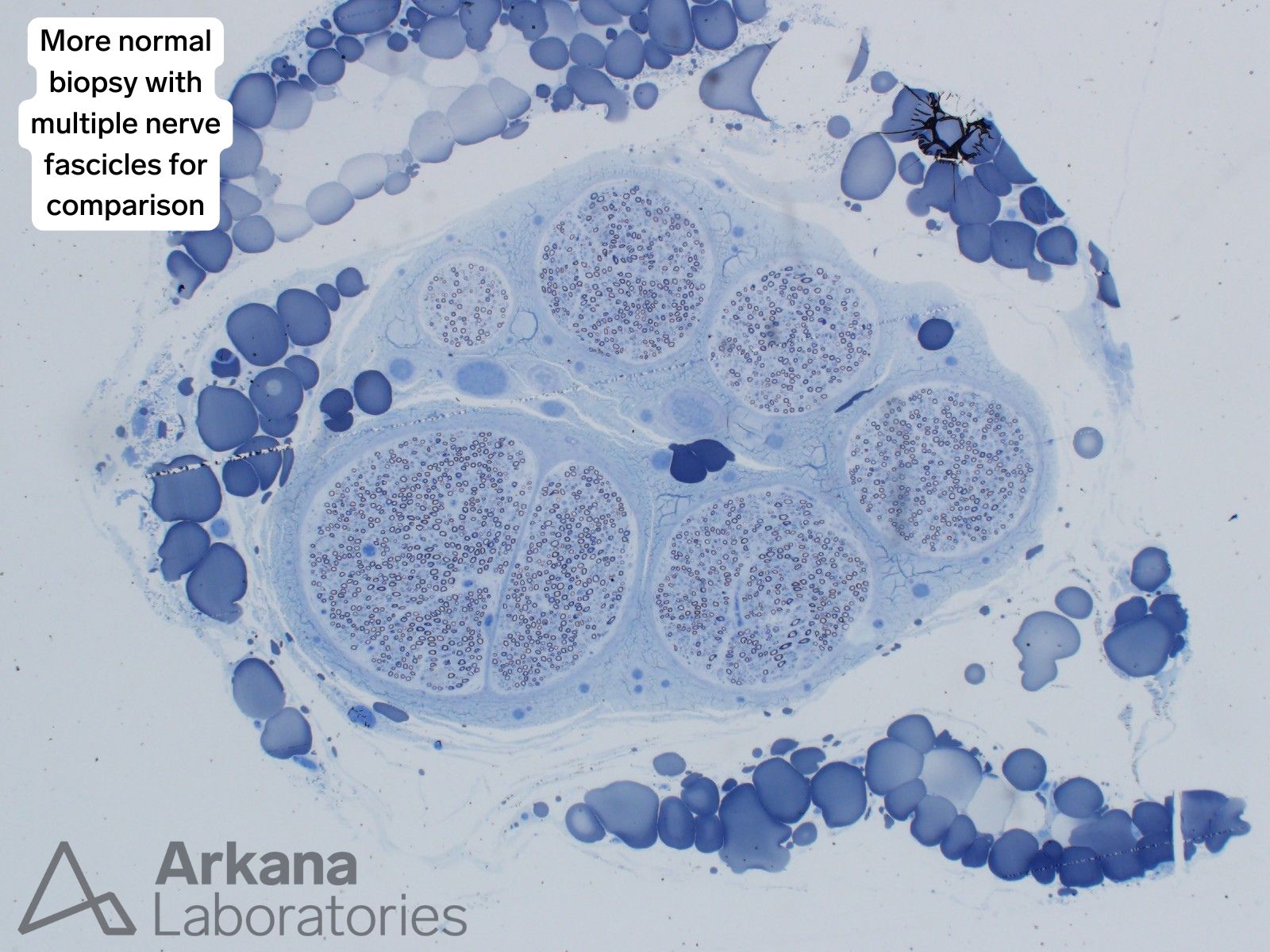Clinical History:
This 45-year-old patient underwent sural nerve biopsy to evaluate for potential etiologies of their progressive sensorimotor predominantly axonal polyneuropathy. An extensive clinical workup did not identify a clinical cause for the patient’s neuropathy (i.e. idiopathic).
What descriptive pathologic diagnosis would you use for the provided toluidine blue-stained thick section (prepared from glutaraldehyde-fixed EPON embedded tissue block)?
An image of more normal appearing nerve fascicles is also provided.
Answer:
- “End-stage nerve”
- The image shows diffuse near complete loss of large diameter and smaller diameter myelinated axons. There is diffuse mild thickening of the perineurium.
- It is frequently difficult to impossible to determine the etiology for a patient’s neuropathy in end-stage nerve biopsy samples.
Reference(s) / Additional Reading:
- Chkheidze R, Pytel P. What Every Neuropathologist Needs to Know: Peripheral Nerve Biopsy. J Neuropathol Exp Neurol. 2020 Apr 1;79(4):355-364. doi: 10.1093/jnen/nlaa012. PMID: 32167544.
- Jackson LJ, Serhal M, Omar IM, Garg A, Michalek J, Serhal A. Sural nerve: imaging anatomy and pathology. Br J Radiol. 2023 Jan 1;96(1141):20220336. doi: 10.1259/bjr.20220336. Epub 2022 Sep 12. PMID: 36039944; PMCID: PMC10997020.
Quick note: This post is to be used for informational purposes only and does not constitute medical or health advice. Each person should consult their own doctor with respect to matters referenced. Arkana Laboratories assumes no liability for actions taken in reliance upon the information contained herein.



